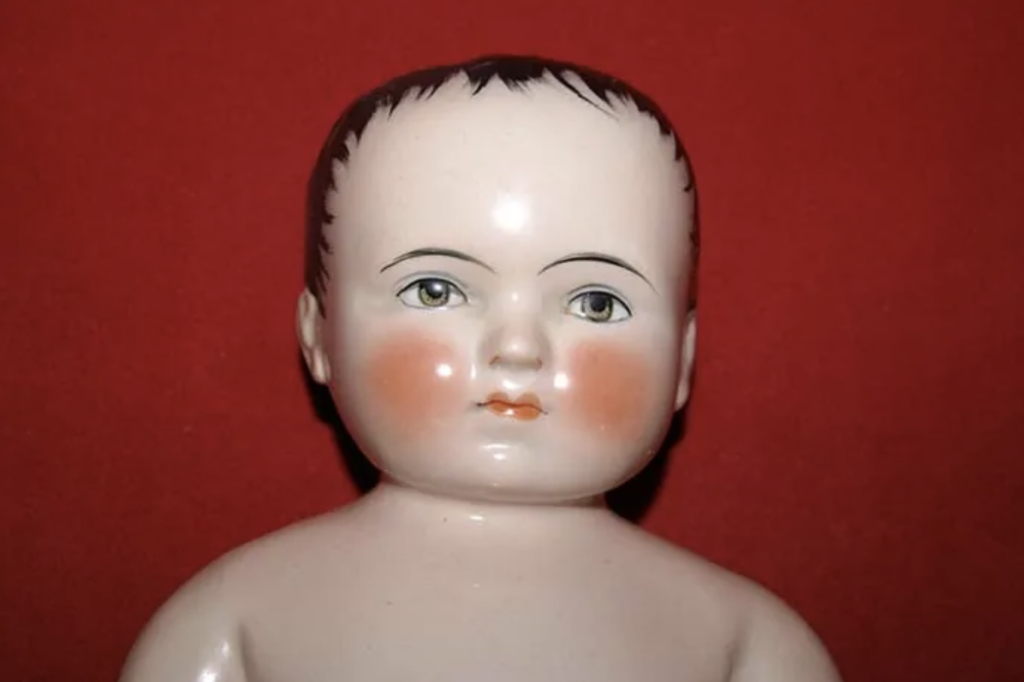Table Of Content

When Americans first saw the hard, white bisque dolls, the association with the unfortunate Charlotte must have seemed obvious. Sometimes sold for as little as a penny, Frozen Charlottes (and the occasional male Charlie) were made by the million. Everyday Free Standard Shipping with a minimum order of $150 or more. Purchase total must equal or exceed the minimum order requirement to qualify. Once qualified, free shipping will automatically apply in your shopping bag at checkout.
Writing Cultural Mythologies & Urban Legends With Colin Dickey
Plus, many of the dolls for sale today on sites like eBay and Etsy are not pre-owned dolls, but rather those excavated in Germany. That the name “Frozen Charlotte” was coined within the doll-collecting community sometime slightly before or around World War 2 is evident in doll collector/historian Eleanor St. George’s 1948 book, Dolls of Yesterday [see also Note 4]. He stripped the mantle off her brow, And the pale stars on her shone, And quickly into the lighted hall, Her helpless form was born.
Sea Glass Note Pad
They were supposed to be designed to float so that children could play with them on the beaches and in the ocean, as well as in the bathtub or a pail of water. Some had an overall pink complexion tint; some had only a pink-tinted face. Apparently business was very brisk for this new doll, as it was produced in quite large numbers by a variety of manufacturers. A New York Observer article published in February 8, 1840 included a story about a woman in upstate New York who froze to death on her way to a New Year’s ball.
More Antiques
This tale, sometimes condensed, was reprinted across the United States in the early 1840s and made its way into British newspapers. Further, it was adapted to poem (or “ballad”) form in early 1841 and credited to “Mrs. Seba Smith” (Elizabeth Oakes Smith, née Prince), an American writer and early feminist. In late 1843 the poem was republished in The Rover, a magazine edited by Smith’s husband; oddly, this time Seba Smith himself was credited as its author.

Legends From History
The popularity of Frozen Charlotte dolls demonstrates the 19th-century obsession with mortality and the era's preoccupation with moralizing tales. Rather than simply accepting the German dolls as a bath toy, Americans turned them into a warning and a lesson about the dangers of ignoring one's mother. I cannot but feel we collectors probably prompted by dealers are making a serious and misleading mistake in coining name for various dolls. If the trade mark is on the doll, well and good, then it is a Jumeau, a Brue, a Lerch and Klagg etc. This expression was used before me in talking over this situation “Such coinage of names puts racketeering into our hobby.” Think of this, you doll collectors.
Americans Named These Porcelain German Bath Dolls 'Frozen Charlotte'
And in order to understand how the doll was so dubbed, you have to know something about the doll and legend on which its name is based. Frozen Charlotte dolls were popular during the late 19th and early 20th centuries in the United States. Smaller versions of the dolls were also known as penny dolls because they were often sold for a cent. These dolls were called badekinder or “bathing dolls,” because they could be completely submerged in water and given a bath.
Barbie doll left on grave of six-year-old rape, murder victim could shed new light on cold case - KFOR Oklahoma City
Barbie doll left on grave of six-year-old rape, murder victim could shed new light on cold case.
Posted: Fri, 18 Jan 2019 08:00:00 GMT [source]
We may think of our own doll in such terms but should not pass it on, for this is as bad as passing on a legend of our own making. Doll collector/historian Nina B. Shepard, in a 1952 commentary on how to put a value to an old doll, went further, mentioning how doll collectors affixing names to 19th-century dolls was problematic. These early descriptions of “Frozen Charlottes” lack the now-current claim that Victorians themselves connected the penny doll with the legend of frozen Charlotte, but that linkage was certainly in place by the early 1950s. Frozen Charlotte is a name used to describe a specific form of china doll made from c. These are the questions most people ask upon seeing Frozen Charlotte dolls, the little Victorian-era children’s toys that will more than likely give you a bit of the willies. Most Frozen Charlotte dolls were sold undressed, so mothers and daughters often would make little clothes for them.
I cannot believe there is authentic proof in the mind of the manufacturers of old dolls or of the children playing with them for so dubbing them. Dolls with blue eyes became popular in Queen Victoria’s reign but we cannot call them ‘Queen Victoria’s’ nor can we call the wooden dolls she played with circa 1820, Victoria dolls. We all see dolls that remind us of some prominent or historical character but why should any one of us have the right to so describe the type.
The Secret to China's Bounciest Meatballs
The name “Frozen Charlotte” added an element of charm and intrigue to these dolls, linking them to the tragic tale of a young woman who paid the price for vanity and fashion in a harsh winter’s night. When, just a few years later, German bath dolls began appearing in America, people began to link the tiny porcelain dolls with the Frozen Charlotte story. In the ballad, Charles "took her hand in his... 'Twas cold and hard as stone," reminding 19th-century Americans of the porcelain dolls. And unlike larger dolls with movable arms and legs, the German bath dolls were immobile, like the ballad's line saying Charlotte "[sat] there like a monument... [with] no power to stir."
Her father liked to see her dressed, Just like some city belle; She was the only child he had, He loved his daughter well. Her hair was black as raven’s wings, Her skin was lily fair, And her teeth were like the pearls of white, None with her could compare. Read how “Frozen Charlotte” dolls were not called by that name until the mid-20th century in The True Story of Frozen Charlotte Dolls. Frozen Charlotte dolls were an affordable luxury for 19th-century Americans. In 1886, Americans could buy a dozen of the larger, 4-inch dolls for just 39 cents. By ignoring her mother and prioritizing fashion over her health, Charlotte caused her own end.
Further, the theme holds that Victorian children recognized the symbolism inherent in these small, corpse-like dolls and used them as playthings, sometimes even placing them in tiny coffins. In fact, we’re told that the motif of this particular frozen woman was so pervasive in the 19th century that our counterparts named a dessert after her and baked representations of her into cakes. In the United States, the term Frozen Charlotte came to be applied to these china dolls since they were “frozen” — that is, they didn’t have moving parts like other dolls. This event was reported in a newspaper and supposedly occurred Dec. 31, 1839. If interested, you may hear the song or read the lyrics on the University of Maine website.
However, if you find such a doll dressed in homemade clothes, examine its body underneath the clothes which can, and often do, disguise a broken or damaged doll. These can be purchased inexpensively, but perfect examples cost much more, depending on features, size and type. Then, there are tiny Frozen Charlotte bathtub dolls sitting in a tub. Some have long hair flowing to their feet; others wear gilt boots, or shoes and socks molded on. Aside from Frozen Charlottes, which were three-quarters of an inch and larger, there were Frozen Charlies, representing Charlotte's beau.
It was likely coined by doll collectors as late as the mid-1940s, when mentions of “Frozen Charlotte dolls” in ads, newspapers, books, and magazines skyrocketed, and soon became the common way to refer to these Victorian playthings. Despite what we moderns believe, nor did the legend of frozen Charlotte serve as inspiration for the creation of Frozen Charlotte Russe, a favorite 19th-century dessert. The trifle-like treat, popular into the 20th century, is merely a cold (or icebox) version of Charlotte Russe, which is based on the still older and simpler charlotte, a type of molded cake known since the 18th century. The increasing prevalence of iceboxes in homes and restaurants in the United States in the last half of the 19th century drove the creation of many cold desserts, which could now be served all year long.
Today, Martha Stewart provides a recipe for Frozen Charlottes, though without the backstory of the cautionary tale of a 19th-century girl freezing on a sleigh ride. The connection between the name and the dolls lies in the fact that, like the unfortunate Charlotte in the song, these dolls are often depicted as being barefoot and without clothing. The popularity of the ballad likely contributed to the adoption of the name for these small porcelain dolls, which began to emerge around the same time.
Moreover, no one writing today about Frozen Charlottes has provided contemporaneous evidence that 19th- and early 20th-century Americans ever considered these small dolls as corpses or the embodiments of a vain young woman who froze on her way to a ball. Newspaper advertisements and writings of the period demonstrate that Americans at least knew these small rigid dolls as “penny dolls,” but toy sellers never seem to have advertised these as “Charlotte” dolls. In fact, nothing in 19th- and early 20th-century publications supports the belief that Americans ever made a connection between these figures and Charlotte [see Note 3 for databases searched].
We’re a dash of every different language and a sprinkle of the world’s cultures. With the assistance of Center staff, the intern will prepare one or more archaeological collections for curation. During the course of the internship, the intern will learn to identify artifacts and ecofacts common to the San Diego region, including lithics, ceramics, historical objects, and faunal, botanical, and mineral specimens. Center staff will instruct the intern on archaeological laboratory procedures such as basic artifact analysis, manual and computer cataloguing, storage requirements, and preventative conservation. At a village just sixteen miles off, There’s a merry ball tonight, Although the air is freezing cold, Her heart is warm and light. And there she watched with an anxious look, ’Til a well-known voice she heard, And driving up to the cottage door, Young Charles in his sleigh appeared.

No comments:
Post a Comment